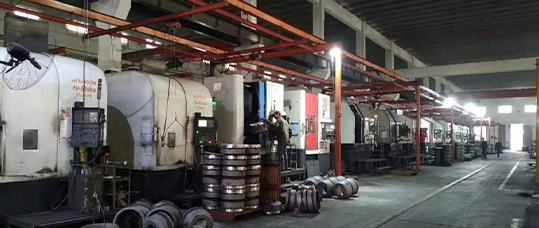
-
 Afrikaans
Afrikaans -
 Albanian
Albanian -
 Amharic
Amharic -
 Arabic
Arabic -
 Armenian
Armenian -
 Azerbaijani
Azerbaijani -
 Basque
Basque -
 Belarusian
Belarusian -
 Bengali
Bengali -
 Bosnian
Bosnian -
 Bulgarian
Bulgarian -
 Catalan
Catalan -
 Cebuano
Cebuano -
 Corsican
Corsican -
 Croatian
Croatian -
 Czech
Czech -
 Danish
Danish -
 Dutch
Dutch -
 English
English -
 Esperanto
Esperanto -
 Estonian
Estonian -
 Finnish
Finnish -
 French
French -
 Frisian
Frisian -
 Galician
Galician -
 Georgian
Georgian -
 German
German -
 Greek
Greek -
 Gujarati
Gujarati -
 Haitian Creole
Haitian Creole -
 hausa
hausa -
 hawaiian
hawaiian -
 Hebrew
Hebrew -
 Hindi
Hindi -
 Miao
Miao -
 Hungarian
Hungarian -
 Icelandic
Icelandic -
 igbo
igbo -
 Indonesian
Indonesian -
 irish
irish -
 Italian
Italian -
 Japanese
Japanese -
 Javanese
Javanese -
 Kannada
Kannada -
 kazakh
kazakh -
 Khmer
Khmer -
 Rwandese
Rwandese -
 Korean
Korean -
 Kurdish
Kurdish -
 Kyrgyz
Kyrgyz -
 Lao
Lao -
 Latin
Latin -
 Latvian
Latvian -
 Lithuanian
Lithuanian -
 Luxembourgish
Luxembourgish -
 Macedonian
Macedonian -
 Malgashi
Malgashi -
 Malay
Malay -
 Malayalam
Malayalam -
 Maltese
Maltese -
 Maori
Maori -
 Marathi
Marathi -
 Mongolian
Mongolian -
 Myanmar
Myanmar -
 Nepali
Nepali -
 Norwegian
Norwegian -
 Norwegian
Norwegian -
 Occitan
Occitan -
 Pashto
Pashto -
 Persian
Persian -
 Polish
Polish -
 Portuguese
Portuguese -
 Punjabi
Punjabi -
 Romanian
Romanian -
 Russian
Russian -
 Samoan
Samoan -
 Scottish Gaelic
Scottish Gaelic -
 Serbian
Serbian -
 Sesotho
Sesotho -
 Shona
Shona -
 Sindhi
Sindhi -
 Sinhala
Sinhala -
 Slovak
Slovak -
 Slovenian
Slovenian -
 Somali
Somali -
 Spanish
Spanish -
 Sundanese
Sundanese -
 Swahili
Swahili -
 Swedish
Swedish -
 Tagalog
Tagalog -
 Tajik
Tajik -
 Tamil
Tamil -
 Tatar
Tatar -
 Telugu
Telugu -
 Thai
Thai -
 Turkish
Turkish -
 Turkmen
Turkmen -
 Ukrainian
Ukrainian -
 Urdu
Urdu -
 Uighur
Uighur -
 Uzbek
Uzbek -
 Vietnamese
Vietnamese -
 Welsh
Welsh -
 Bantu
Bantu -
 Yiddish
Yiddish -
 Yoruba
Yoruba -
 Zulu
Zulu
can you change drum brakes to disc brakes
Can You Change Drum Brakes to Disc Brakes?
When it comes to modern vehicle braking systems, there are two primary types drum brakes and disc brakes. While both have their advantages and disadvantages, the trend in automotive design has increasingly favored disc brakes, especially for performance and safety reasons. This leads us to a common question among car enthusiasts and those looking to upgrade their vehicles Can you change drum brakes to disc brakes?
Understanding the Basics
Before diving into the specifics of a conversion, let's first understand the difference between drum and disc brakes. Drum brakes consist of a hollow drum that rotates with the wheel, with brake shoes that press against the inner surface of the drum to create friction. On the other hand, disc brakes use a flat, circular disc and calipers that squeeze brake pads against the disc to slow down or stop the vehicle.
Disc brakes generally provide better stopping power, heat dissipation, and pedal feel. They are less prone to fading under heavy use compared to drum brakes. For these reasons, many car owners consider upgrading their braking systems.
Benefits of Upgrading to Disc Brakes
1. Improved Stopping Power Disc brakes offer stronger stopping power than drum brakes, particularly in high-performance situations or when driving in hilly terrains.
2. Better Heat Dissipation Disc brakes are designed to dissipate heat more effectively, which reduces the risk of brake fade, ensuring consistent performance.
3. Easier Maintenance Disc brakes are typically easier to inspect and maintain than drum brakes, allowing for quick replacement of pads and easier access to components.
4. Modern Technology Upgrading to disc brakes often allows for compatibility with modern technologies like anti-lock braking systems (ABS), enhancing overall vehicle safety.
The Conversion Process
can you change drum brakes to disc brakes

Converting from drum brakes to disc brakes is a worthwhile project but requires careful planning and execution. Here’s an overview of the key steps involved
1. Assessment of Compatibility Not all vehicles can easily accommodate a conversion from drum to disc brakes. It's essential to check whether your vehicle's spindles, suspension, and mounting points support disc brakes.
2. Sourcing Parts Once compatibility is confirmed, the next step is to acquire the necessary parts for the conversion. This typically includes disc brake rotors, calipers, pads, and a compatible master cylinder and brake lines.
3. Removal of Existing Drum Brakes Carefully remove the drum brakes from the vehicle. This includes unbolting the drums and disconnecting any associated components such as the brake lines and parking brake mechanism.
4. Installing Disc Brake Components Begin the installation of the new disc brakes by attaching the bracket and caliper assembly, followed by the disc rotor. Ensure that everything is torque-fitted and aligned properly to avoid braking issues.
5. Bleeding the Brake System After installation, it’s crucial to bleed the brake system to remove any air that may have entered during the process. This ensures that the brakes function correctly.
6. Testing Before hitting the road, conduct a thorough test of the new braking system. Ensure that the pedal feels firm and that the car stops effectively.
Considerations
While converting to disc brakes can be beneficial, it’s essential to consider the costs involved and whether you have the necessary skills or equipment for the conversion. In certain cases, it may be more practical to consult with a professional mechanic or technician who specializes in brake systems.
Conclusion
Changing from drum brakes to disc brakes is indeed feasible and can offer significant improvements in vehicle performance and safety. However, it requires research, preparation, and careful execution. For enthusiasts or those seeking enhanced performance, this upgrade might just be the perfect choice to enhance their driving experience.
-
What Are Drum BrakesNewsJul.07,2025
-
Understanding Brake Drum MaterialNewsJul.07,2025
-
Semi-Trailer Brake Drum: A Key Component for Extreme Loads and Long-Distance TransportNewsJul.07,2025
-
Drum Brake Pads for SaleNewsJul.07,2025
-
Brake Drums for SaleNewsJul.07,2025
-
Brake Drum ManufacturerNewsJul.07,2025
-
Aluminum Brake Drums: The Future of High-Performance CarsNewsJul.07,2025
